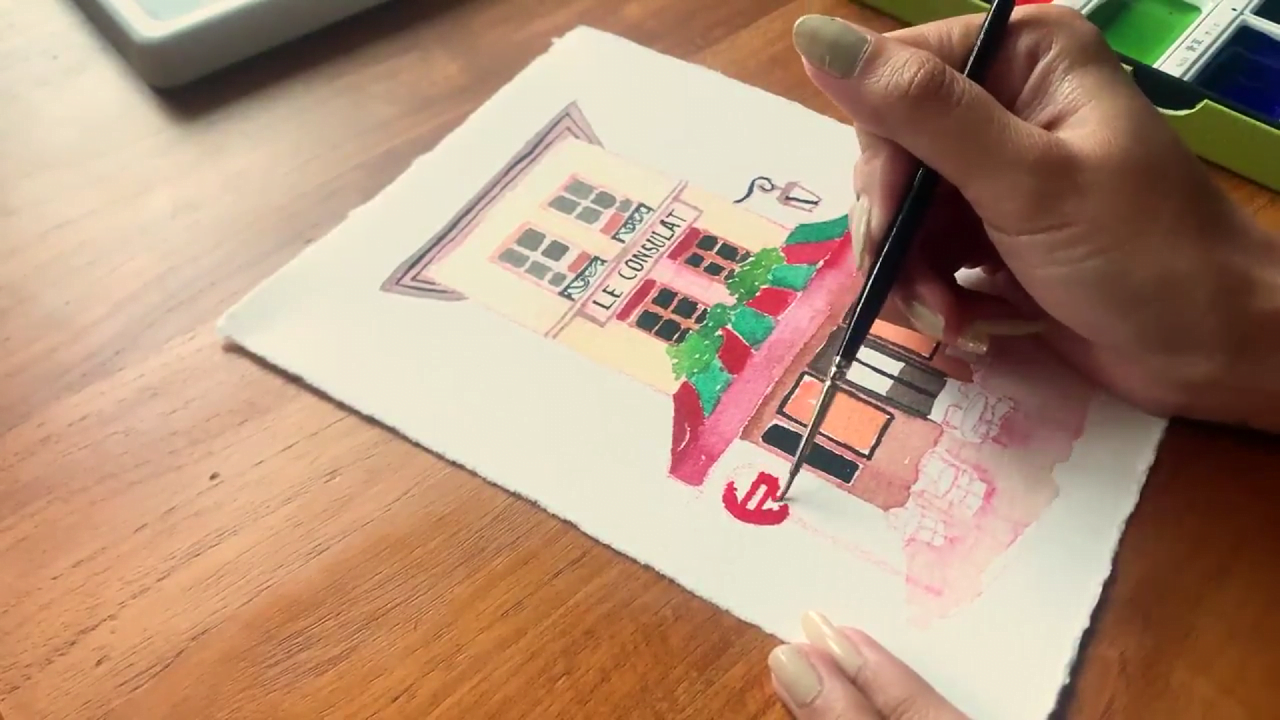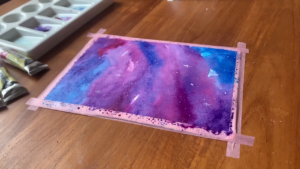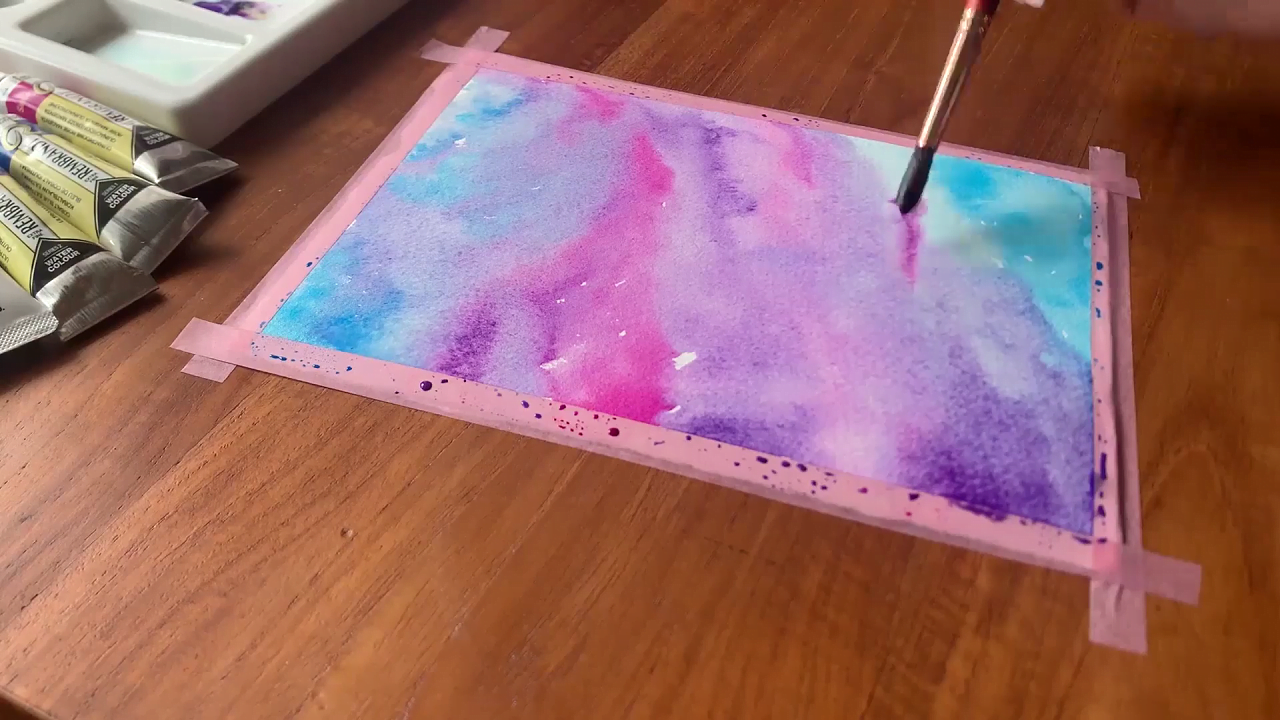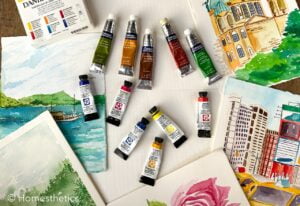Discover the battle between two artistic heavyweights: oil painting and watercolor. From techniques to misconceptions to famous artists, this article dives deep into the world of these two mediums. Read on to uncover the secrets and unique qualities of each medium.

Picture this: You're standing in an art store, surrounded by rows and rows of paints, brushes, and canvases. You're staring at two of the most popular mediums used in painting: oil and watercolor. The colors are vibrant, and the textures are rich. But you're stuck, wondering which medium to choose for your next masterpiece. Should you go for the thick, buttery oils or the delicate, translucent watercolors?
Well, fear not, my fellow artist! Get ready for a showdown between two of the most popular painting mediums in the world: oil paints and watercolors!
Oil Painting Unveiled
Imagine a world without oil paintings - no Mona Lisa, no Starry Night, no The Persistence of Memory. Art would be a much duller place without the vivid colors, thick textures, and mesmerizing details of oil paintings.
Oil painting is a complex and versatile medium that has been used for centuries by some of the most famous artists in the world, from Rembrandt and Van Gogh to Picasso and Warhol. At its core, oil painting involves using pigments suspended in an oil-based medium, typically linseed oil, to create a wide range of colors and effects.
One of the most notable characteristics of oil painting is its vibrancy. The pigments used in oil paints are rich and intense, resulting in bold colors that can create striking contrasts and depth. Additionally, oil paints are translucent, which allows artists to create layers and subtle transitions and variations.
Oil painting is not just about creating bold colors - it's also a versatile painting medium. Unlike watercolor paintings, which require a light touch and a quick hand due to the paint's fast-drying time, oil paints dry slowly. This gives oil painters more time to manipulate the paint and create the desired effect.
Additionally, oil paint makes it possible to work on a variety of surfaces, from paper to canvas. Oil painters can even combine oil paints with other mediums, such as charcoal or pastels, to create unique painting styles. Another advantage of oil paint is that the pigment is suspended in a paint layer that takes longer to dry, allowing for more time to make changes and blend colors.
Many artists prefer to use linseed oil as a medium in their oil paintings because it makes oil paints more fluid and easier to work with. While acrylic paints offer their own benefits, oil painting remains popular and enduring in the art world.
Despite its many advantages, an oil painting also poses some unique challenges. The lengthy drying time can be frustrating for artists who want to work quickly, and the need for special tools and solvents can be intimidating for beginners.
However, these challenges are outweighed by the benefits that oil painting provides. The slow drying time allows artists to work at their own pace, giving them the freedom to experiment and create their desired result. And while the need for special tools and solvents may seem daunting at first, they provide artists with more control over their work, allowing them to create intricate details and textures.
So the next time you gaze at a masterpiece created with oil paints, take a moment to appreciate the complexity and versatility of this timeless medium.

Watercolors: Painting with the Magic of Water
Are you looking for a painting medium that is as expressive and versatile as your imagination? Look no further than watercolors! Watercolor painting is a unique and exciting art form that offers both challenges and rewards for artists of all levels.
So, what exactly is watercolor painting? Simply put, it is a technique of painting with pigments suspended in a water-based solution. Unlike oil paints, which require a solvent such as turpentine or mineral spirits to thin the paint, watercolor paints are water-soluble, making them easier to clean up and less toxic to work with.
But watercolors are much more than just a convenient paint medium. They possess a variety of unique characteristics that make them ideal for creating beautiful, expressive works of art. For one, most watercolors are known for their transparency and translucency, allowing light to pass through the layers of paint and creating a sense of depth and luminosity.
Another great advantage of watercolors is their portability. Unlike oil paints, which can be messy and require a lot of supplies and space to work with, watercolors are lightweight, easy to transport, and require very little equipment to get started. All you really need is some watercolor paper, a set of watercolor paints, a few watercolor brushes, and you're ready to start painting wherever you are.
Of course, like any medium, watercolor painting also has its challenges. One of the biggest is the unpredictability of the paint. Because watercolors are highly reactive to water and other additives, they can be difficult to control, and mistakes can be hard to correct. However, many artists find this unpredictability to be part of the beauty of the medium and embrace the happy accidents that can occur when working with watercolor paints.
But with a little practice and experimentation, you can learn to harness the unique characteristics of watercolors to create stunning works of art that capture your unique vision and style. Whether you're just starting out with watercolors or you're a seasoned pro looking to push your skills to the next level, there's never been a better time to start exploring this exciting medium.
So, what are you waiting for? Grab your watercolor paints, some paper, and your favorite brushes, and start exploring the wonderful world of watercolor painting today!

Comparing Watercolor and Oil Paint
Oil paints are known for their rich, vibrant colors that have a glossy finish. They are made by mixing pigments with an oil-based medium. The paint dries slowly, which allows artists to blend colors and create smooth transitions between shades. This makes it a popular choice for creating depth and texture in paintings. However, the drying time can be a disadvantage for those who prefer to work quickly.
Watercolor paints, on the other hand, are known for their slightly translucent appearance and matte finish. They are made by suspending pigment in a water-based medium and are applied to the paper using a watercolor brush. Watercolors dry quickly, which makes them a good choice for artists who prefer to work fast. However, watercolor paints can be less forgiving, as mistakes can be more difficult to fix.
But how do these two paint mediums compare to each other? Let's break it down.
Appearance: Glossy vs Matte
Oil paintings have a lustrous, glossy finish that can create deeper shadows and richer tones, while watercolors have a slightly translucent, matte finish with brighter highlights and a lighter appearance.
Technique: Layering vs Blending
Oil paints are great for layering and building texture, while watercolors are best used for creating washes and subtle blends.
Mood and Style: Classic vs Whimsical
Oil paintings are associated with traditional, classic styles and serious themes, while watercolors are associated with a more whimsical and playful style.
Blending: On-Canvas vs Pre-Mix
Oil paints are great for blending and mixing colors on the canvas, while watercolors require pre-mixing on the palette knife to achieve desired color blends.
Detail work: Precise vs Delicate
Oil paints allow for more precise detail work due to their ability to be used in layers and manipulated on the canvas. Watercolors, while capable of detailed work, require a more delicate touch and are more prone to bleeding outside of intended lines.
Drying time: Slow vs Fast
Oil paints take a long time to dry, which allows for more flexibility and blending while painting. Watercolors, on the other hand, dry much faster, making them more challenging to blend and adjust once applied.
Layers: Depth & Texture vs Blending & Bleeding
Oil paints can be layered on top of each other, creating a sense of depth and texture in a painting. Watercolors, however, cannot be used for layers in the same way as the colors tend to blend and bleed together.
Portability: Bulky Supplies vs Lightweight Materials
Watercolors are easier to transport than oil paints, as they require only paper, brushes, and a set of watercolors. Oil paint supplies can be bulky and require more planning for transport.
Longevity: Timeless vs Ephemeral
Oil paintings are known to last for centuries, while watercolors are more prone to fading and discoloration over time.
Cost: Expensive Supplies vs. High-Quality Paper
While watercolor paints are generally more affordable than oil paints, the cost of high-quality watercolor paper can add up quickly. Oil painting supplies such as solvents and drying mediums can also add to the overall cost.
Cleanup: Solvents and Special Cleaning Agents vs Water
Oil paint requires the use of solvents and special cleaning agents to remove paint from brushes and surfaces. Watercolor paints can be easily cleaned up with water.
Now, let's take a look at some famous paintings in each medium to illustrate the differences. "Mona Lisa" by Leonardo da Vinci is a classic example of oil paint, with its deep shadows and subtle hues creating a mysterious atmosphere. In contrast, "Nocturne in Black and Gold: The Falling Rocket" by James McNeill Whistler features a striking combination of gold and black, capturing the beauty and energy of fireworks in the night sky.
Both watercolor and oil paint have their unique pros and cons, and the choice ultimately comes down to personal preference and the desired outcome of the artwork. Whether you prefer the bold, textured strokes of oil paints or the organic, playful patterns of watercolors, there is no right or wrong way to express yourself through art. So, grab your brushes, experiment with different mediums, and start painting today!
Both oil and watercolor paint can be forgiving to work with, depending on the artist’s skill and technique. Oil paints can be easily corrected and blended, while watercolors can be reactivated with water for some time after application, allowing for adjustments. Oil paints are better suited for layering and building texture, while watercolors are best used for creating washes and subtle blends. Both mediums can be used for blending, but oil paints are more forgiving in this regard as they can be blended on the canvas, while watercolors require pre-mixing on the palette. Oil paints take some days or even weeks to dry, which allows for more flexibility and blending while painting. Whereas watercolors dry faster, making them more challenging to blend and adjust once applied. One common misconception about oil paint is that it is toxic or harmful to work with, but modern oil paints are generally safe when used as directed. With watercolors, a common misconception is that they are only suitable for light, delicate paintings when in fact, they can be used to create a wide range of styles and effects. The cost of using either medium depends on the quality of the supplies and the specific techniques used. Generally, high-quality oil paints and supplies can be more expensive than watercolors, but the cost of high-quality watercolor paper can also add up. Acrylic paint can be a more affordable alternative to both oil and watercolor. Oil paints tend to have more intense and vibrant colors, as the pigment is suspended in an oil-based paint medium. Watercolors can also be vibrant, but the translucent nature of the medium can give them a softer, more delicate appearance. Notable artists who worked primarily in oil paint include Vincent van Gogh, Rembrandt, and John Singer Sargent, while notable watercolor artists include Winslow Homer, J.M.W. Turner, and Georgia O’Keeffe. The styles of these artists reflect the unique qualities of their chosen medium, such as the textured brushstrokes and bold colors of van Gogh’s oil paintings or the delicate washes and subtle blending of Homer’s watercolors. Both oil and watercolor paint can be used to paint a variety of subjects, but some artists prefer one medium over the other for certain subjects. Oil paints are often used for portraits and still lifes, as they allow for precise detail work and the building of texture. Watercolors are well-suited for landscapes and nature scenes, as they can capture the fluidity and organic quality of these subjects. However, these are not strict rules, and many artists use both mediums for a variety of subjects.FAQs Related To Oil Painting Vs Watercolor

Conclusion
At the end of the day, art is subjective and personal, and what may work for one artist may not work for another. It's all about finding your own voice and style and using the tools and techniques that resonate with you.
As for the age-old question of whether oil painting or watercolor is better, the answer is simple: there is no winner. Both mediums offer their unique advantages and challenges, and it ultimately comes down to the artist's individual preferences.
It's easy to get caught up in the debate over which medium is better, but in reality, art is about much more than that. It's about capturing the essence of the world around us and bringing it to life through our own unique perspective.
What's most important is that artists continue to experiment and push the boundaries of their craft, using whatever materials and techniques best suit their creative vision. Whether it's an oil painting, watercolor, or something entirely different, the true beauty of art lies in its ability to connect with us on a deep emotional level and inspire us to see the world in a new light.
